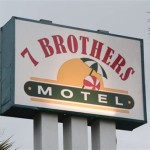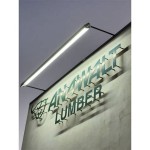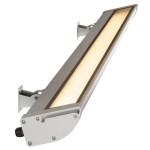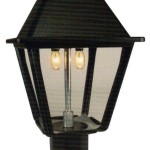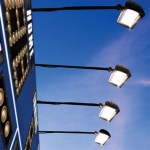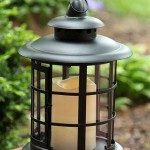```html
LED Lighting: Illuminating the Commercial Outdoor Landscape
The adoption of LED (Light Emitting Diode) lighting in outdoor commercial settings represents a significant shift in how businesses approach illumination. Traditional lighting solutions, such as high-pressure sodium (HPS) and metal halide lamps, are gradually being replaced by LED technology due to its superior energy efficiency, longer lifespan, and enhanced controllability. This transition is driven by economic benefits, environmental considerations, and the desire for improved lighting quality that enhances safety and aesthetics.
Outdoor commercial spaces encompass a wide array of applications, including parking lots, building facades, walkways, security lighting, signage, and landscape illumination. Each of these applications has specific lighting requirements, and LED technology offers the flexibility to meet these diverse needs effectively. The ability to precisely control the light output, direction, and color temperature of LED fixtures allows for customized lighting designs that optimize visibility and minimize light pollution.
Energy Efficiency and Cost Savings
One of the primary drivers behind the adoption of LED lighting in outdoor commercial environments is its exceptional energy efficiency. LEDs consume significantly less energy compared to traditional lighting technologies, often reducing energy consumption by 50% to 80%. This translates into substantial cost savings on electricity bills over the lifespan of the fixtures. The difference in energy consumption stems from the way LEDs produce light. Incandescent bulbs generate light by heating a filament, a process that wastes a significant portion of the energy as heat. HPS and metal halide lamps rely on gas discharge, which is more efficient than incandescent lighting but still less efficient than LED technology. LEDs, on the other hand, produce light through electroluminescence, a process that directly converts electrical energy into light with minimal energy loss.
The extended lifespan of LED fixtures further contributes to cost savings. LEDs typically last for 50,000 to 100,000 hours, which is significantly longer than the lifespan of traditional lighting solutions. HPS lamps, for example, typically last for around 24,000 hours, while metal halide lamps last for around 10,000 to 20,000 hours. This longer lifespan reduces the frequency of replacements, minimizing maintenance costs and downtime. The reduced need for replacements also lowers the environmental impact associated with manufacturing and disposing of old fixtures.
Beyond energy consumption and lifespan, LED lighting can also contribute to cost savings through dimming and control capabilities. Many LED fixtures can be dimmed or adjusted based on occupancy or time of day, further reducing energy consumption during periods of low activity. Smart lighting systems can automatically adjust lighting levels based on sensor data, such as ambient light levels or motion detection, optimizing energy efficiency and enhancing security. These advanced control features are not readily available with traditional lighting technologies, making LED lighting a more adaptable and cost-effective solution for outdoor commercial applications.
Enhanced Lighting Quality and Safety
In addition to energy efficiency, LED lighting offers superior lighting quality compared to traditional lighting solutions. LEDs provide a brighter and more uniform light, improving visibility and enhancing safety in outdoor commercial spaces. The ability to choose from a wide range of color temperatures allows for the creation of a more visually appealing and comfortable environment. For example, warm white light (2700K-3000K) can create a welcoming and inviting atmosphere in walkways and seating areas, while cool white light (4000K-5000K) can improve visibility and alertness in parking lots and security areas.
The directional nature of LED lighting also contributes to improved lighting quality. Unlike traditional lamps that emit light in all directions, LEDs emit light in a specific direction. This allows for more precise control over light distribution, minimizing light trespass and light pollution. Shielding and optics can be used to further direct the light and prevent glare, enhancing visibility and reducing the impact on neighboring properties. Precise light control can contribute to better security by illuminating targeted areas while minimizing shadows and dark spots.
Improved color rendering is another advantage of LED lighting. Color rendering index (CRI) measures the ability of a light source to accurately reproduce the colors of objects. LEDs typically have a higher CRI than traditional lighting solutions, resulting in more vibrant and realistic colors. This is particularly important for applications such as signage and landscape lighting, where accurate color representation is essential for aesthetics and branding. Higher CRI contributes to a safer environment by enabling better color differentiation, aiding in identifying potential hazards or obstacles. For example, the ability to accurately distinguish between different colored wires or safety markings can be crucial in preventing accidents.
Environmental Benefits and Sustainability
The adoption of LED lighting in outdoor commercial spaces contributes to environmental sustainability through reduced energy consumption and longer lifespan. Lower energy consumption translates into reduced greenhouse gas emissions from power plants, mitigating the impact of climate change. The extended lifespan of LEDs reduces the frequency of replacements, minimizing waste and the environmental impact associated with manufacturing and disposing of old fixtures. The reduction in waste extends beyond the fixture itself, as fewer replacement parts like ballasts and starters are needed, reducing the reliance on raw materials.
Many LED fixtures are also designed to be recyclable, further reducing their environmental impact at the end of their lifespan. Some manufacturers offer take-back programs to facilitate the recycling of old fixtures, ensuring that materials are recovered and reused. This reduces the need for mining and processing virgin materials, conserving natural resources and minimizing pollution.
LEDs do not contain hazardous materials such as mercury, which is commonly found in fluorescent lamps and other traditional lighting technologies. Mercury is a toxic substance that can contaminate the environment if improperly disposed of. The absence of mercury in LEDs makes them a safer and more environmentally friendly lighting solution. This reduces the risk of environmental contamination from broken or discarded fixtures and simplifies disposal procedures, reducing costs and potential liabilities for businesses.
Beyond the direct environmental benefits of LED lighting, the adoption of this technology can also contribute to a company's overall sustainability initiatives. By reducing energy consumption and minimizing waste, businesses can demonstrate their commitment to environmental responsibility and enhance their corporate image. Many businesses are actively pursuing sustainability certifications, such as LEED (Leadership in Energy and Environmental Design), and the use of LED lighting can contribute to achieving these certifications.
The integration of smart controls and sensors with LED lighting systems adds another layer of environmental benefits. These systems optimize energy use by adjusting light levels based on occupancy, daylight availability, and other factors. This further reduces energy consumption and greenhouse gas emissions, contributing to a more sustainable environment. Smart lighting systems can also provide valuable data on energy usage, allowing businesses to track their progress and identify opportunities for further improvement.
```
Led Commercial Outdoor Lighting And Controls Cur Gli Brands

Guide To Exterior Lighting Commercial Led Outdoor

A Guide To Outdoor Commercial Led Lighting Action Services Group

Outdoor Security Lighting Commercial Industrial Led

Outdoor Security Lighting Commercial Industrial Led

Commercial Led Outdoor Lighting Meteor Space Electical

Led Outdoor Lighting Commercial Industrial Revolve

The Operational Benefits Of Exterior Outdoor Led Lights

Commercial Outdoor Lighting Enhanced

Commercial Outdoor Led Lighting Flood Lights Solutions
Related Posts
